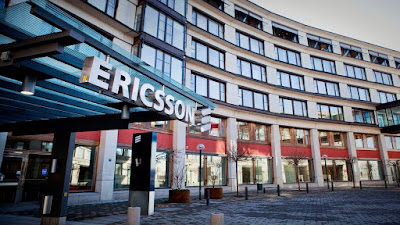Nigeria, others to lag as latest mobile technologies adoption soar
By Mod- [ Update ]
Ericsson
Nigeria and other sub Saharan African countries have been predicted to still retain second generation (2G) mobile technology in the next five years when other regions of the world would have migrated to newest technology, according to Ericsson Mobility report released recently.
Responding to its forecast that 2G will remain relevant in Nigeria and Sub-Saharan Africa, Nora Wahby, head of West Africa, Ericsson Middle East and Africa, who released the report in Lagos, attributed this to none availability of smartphones for fast technologies such as 3G, 4G and LTE in the region.
“Penetration of smartphones required for higher technologies are still low in this region and will continue for few more years to come. This has also affected subscription of 4G, LTE services,” she said.
Oladipo Raji, chief executive officer, InfraFocus Partners, explained that for 2G technology to remain relevant in Nigeria is not a matter of none availability of devices, but purchasing power of the subscribers as well as value and education.
“I think that the challenge is not that smartphones are not available but the resources to buy those high end devices are not there for many Nigerians, more so, some people in rural areas are not well educated on how to use some applications in these smartphones which to them does not add value to them,” he said.
On poor service delivery in the country, Raji attributed it to lack of investment on capacity. “In the last three years there has not been any investment on expansion of capacity by operators because of unhealthy business environment. Operators have rolled out 4G and LTE technologies, but no infrastructure to distribute it. Function of every government is to act as an enabler for businesses to thrive.
“In Nigeria, the case is different, there is no power, no cable operators, and infrastructure is not protected. The problems are obvious we just have to live with it,” he added. Olusola Teniola, president, Association of Telecommunications Companies of Nigeria (ATCON) agreeing with the prediction said: “This is very true indeed and brings to reality the situation the industry finds itself after 10 years of a mobile voice telephony boom on the back of 2G network rollouts in sub Saharan Africa.
“2G represents the most viable and economical network for both rural and urban cities. The challenge still for Nigeria is to cover the 192 market gaps that 2G has failed to address. On the back of a pervasive 2G network subsequent upgrades to LTE/4G may be considered for true high speed broadband services,” he said.
On difficulty subscribers of GSM services in Nigeria face to enjoy 4G and LTE services, he said: “There are several challenges to the deployment of 4G in Nigeria. The first one is the lack of affordable 4G / LTE handsets that are available in Nigeria.
“Secondly, the lack of fiber to towers hosting current 4G BTS(s) this meant that true high speed broadband is not being truly experienced by consumers that have subscribed to those services on offer.
Thirdly, lack of local content that is highly relevant has not created the demand that can justify the deployment of 4G beyond certain cities in Nigeria,” he added.
Responding to deployment of newest technology to less economic viable areas, Teniola said: “Unfortunately, Return On Investment is a key motivator for any operator to roll out services in a particular location. Beyond this it is the responsibility of Government to ensure universal service accessibility is achieved for those citizens residing in communities outside those attractive to commercial.

Comments
Post a Comment